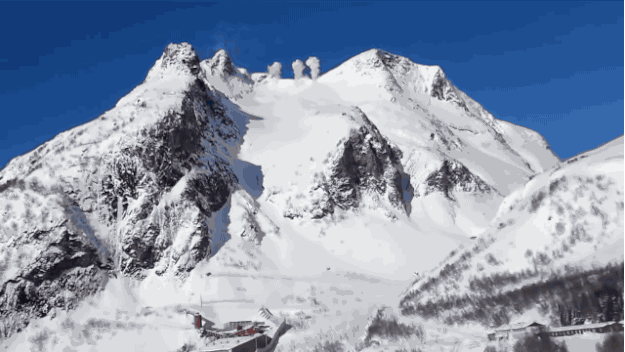DailyCelestialChallenge-Thursday-Forces in Nature / Avalanche
 )
)Image Source
An avalanche, also called an avalanche, is the displacement of the snow layer downwards, which can incorporate part of the substrate and the vegetation cover of the slope
There are two types of avalanches:
Surface avalanche: where only part of the snow mantle is mobilized.
Avalanche of bottom: where it mobilizes of sudden and violent way everything eroding the substrate of the hillside, transporting and depositing these materials in the point where the angle of the same with respect to the horizontal one, allows it.

Image Source
To classify the risk there is a European Avalanche Hazard Scale, used in almost all the world:
Weak;
Limited;
Remarkable;
Strong;
Very strong.
Snow avalanches
Usually part of a point and drag more and more snow. This avalanche starts when the weight of the snow succumbs to the force of gravity. This happens especially after heavy snow (from 25cm thick), particularly when it accumulates on a smooth base (due to rain, frost, melting snow). This snow, very light, mixes with the air forming an aerosol that descends the slope at a speed of 100 to 300 km / h.
- Plate avalanches
This type of avalanche is the most frequent. A plate is a surface of compact snow that is detached from the rest of the snow cover and that slides on the ground or on the existing snow. These plates can be immense and they leave a limit of fracture very visible.
- Wet snow avalanches
This type of avalanche occurs when the temperatures rise and in the spring on the slopes well exposed to the sun (when the snow melts). They slide slowly (20 to 60km / h), the factors that trigger it are the air or the hot wind, the sun and overweight.

Image Source
Note: @sirknight started a contest and its daily theme's are:
Sunday-Light
Monday-Darkness
Tuesday-AnimalKingdom
Wednesday-Structures
Thursday-ForcesinNature
Friday-LoveBeautyFreedom
Saturday-Agriculture